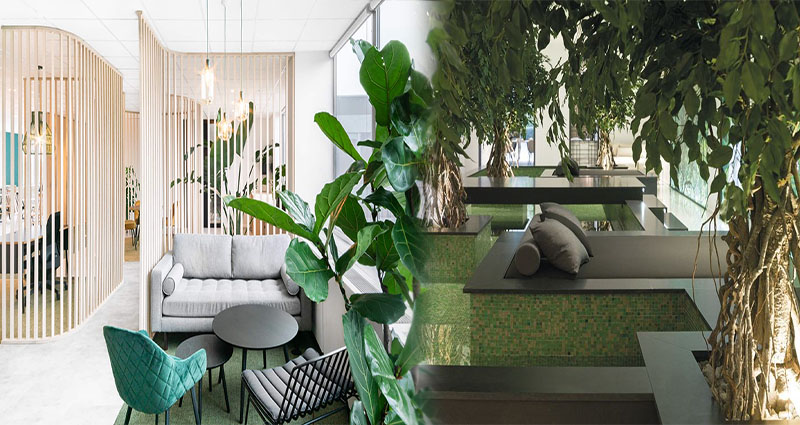Biophilic design is an approach to architecture that incorporates nature and natural elements into building design. It aims to improve human well-being by creating a connection between the built environment and the natural world. Sustainable architecture is another approach that seeks to minimize the environmental impact of buildings. Using biophilic design elements in sustainable architecture creates a space that is not only sustainable but also supports human health and well-being. In this article, we will explore some of the key biophilic design elements that can be incorporated into sustainable architecture.
Natural Light and Views
One of the primary biophilic design elements in sustainable architecture is the use of natural light and views. Access to natural light and views of nature has been shown to improve human health and productivity. Large windows, skylights, and open layouts allow for increased natural light and views of surrounding natural environments. This not only connects the building’s occupants to nature but also reduces the need for artificial lighting, leading to energy savings.
Living Green Walls
Living green walls are a biophilic design element that is becoming increasingly popular in sustainable architecture. These vertical gardens are made up of live plants that grow vertically on the walls of a building. Living green walls provide several benefits, including enhancing indoor air quality, reducing noise levels, and improving mental well-being. The plants also act as natural insulation, reducing the energy needed to heat and cool the building.
Indoor-Outdoor Connection
Incorporating an indoor-outdoor connection into the design of a building is another biophilic design element used in sustainable architecture. This can be achieved through features such as outdoor courtyards, green roofs, and balconies that blur the lines between indoor and outdoor spaces. This not only provides access to fresh air and natural views but also increases energy efficiency by reducing the need for heating and cooling.
Natural Materials
Using natural materials such as wood, stone, or bamboo is a biophilic design element that can give a sustainable building a natural and organic feel. These materials are not only environmentally responsible but also have a positive impact on human well-being. They are known to reduce stress and improve overall mood in building occupants.
Water Features
Water features, such as fountains or water walls, are another biophilic design element that can be used to create a connection between indoor spaces and nature. Water features have been shown to provide a calming effect on building occupants, reducing stress levels and improving mental well-being. Incorporating water-saving and energy-efficient technologies in their design can also make them a sustainable element in the building.
Natural Color Palettes
Incorporating natural color palettes that reflect nature, such as shades of green, blue, and brown, is a biophilic design element that can create a relaxing and inviting environment. Using natural colors in the design of a building can improve the mood and well-being of its occupants while also promoting sustainability by reducing the need for artificial lighting and paint.
Incorporating biophilic design elements into sustainable architecture results in buildings that not only promote environmental sustainability but also support human health and well-being. By using natural light and views, living green walls, an indoor-outdoor connection, natural materials, water features, and natural color palettes, architects and builders can create buildings that are sustainable, livable, and healthy. These elements are the foundation of sustainable architecture and can be used to help create a healthier and more sustainable built environment.












